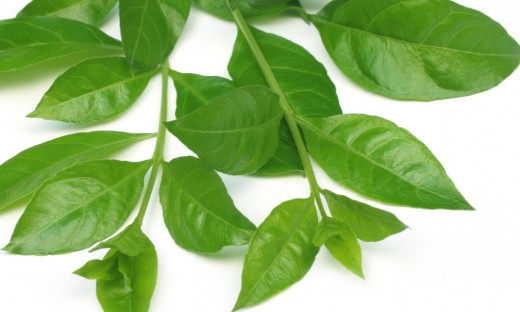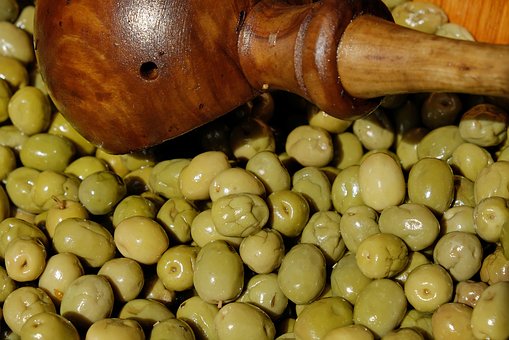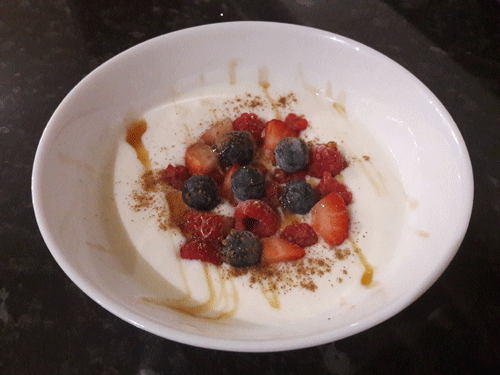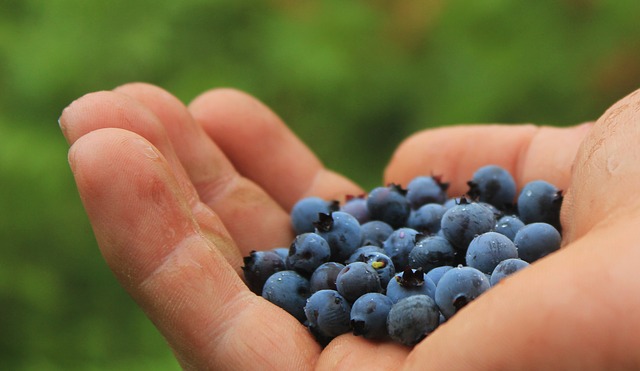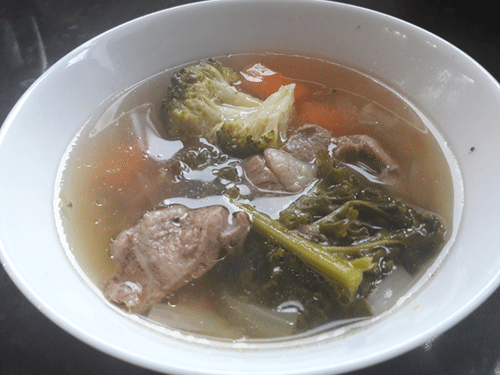Copy Link
Email
Print

Ginger is an herb. The rhizome (underground stem) is used as a spice and also as a medicine. It can be used fresh, dried and powdered, or as a juice or oil. Ginger is commonly used to treat various types of "stomach problems," including motion sickness, morning sickness, colic, upset stomach, gas, diarrhea, nausea and vomiting after surgery, as well as loss of appetite. Other uses include treating upper respiratory tract infections, cough, and bronchitis.
Zhang S, Liu Q, Liu Y, Qiao H, Liu Y. Zerumbone, a Southeast Asian ginger Sesquiterpene, Induced Apoptosis of Pancreatic Carcinoma Cells through p53 Signaling Pathway. 1. Evid Based Complement Alternat Med. 2012;2012:936030. Epub 2012 Jan 29. Pancreatic carcinoma is one common cancer with gradually increasing incidence during the past several decades. However, currently the candidate drugs to suppress pancreatic cancer remain lacking. This research was carried out to investigate if zerumbone, a natural cyclic sesquiterpene isolated from Zingiber zerumbet Smith, will produce the anticancer effects on pancreatic carcinoma cell lines. The results showed that zerumbone concentration, and time, dependently produced inhibitory actions on cell viability of PANC-1 cells. In addition, Hoechst 33342, AO/EB, TUNEL staining, and caspase-3 activity assay further showed that zerumbone induced apoptosis of PANC-1 cells. The expression of p53 protein was markedly upregulated, and the p21 level was also obviously elevated in zerumbone-treated PANC-1 cells. Moreover, ROS production was increased by about 149% in PANC-1 cells treated by zerumbone 30??M. Zerumbone also produced the same antitumor activity in pancreatic carcinoma cell lines SW1990 and AsPC-1. In summary, we found that zerumbone was able to induce apoptosis of pancreatic carcinoma cell lines, indicating to be a promising treatment for pancreatic cancer.
Pancreatic carcinoma is one common cancer with gradually increasing incidence during the past several decades. However, currently the candidate drugs to suppress pancreatic cancer remain lacking. This research was carried out to investigate if zerumbone, a natural cyclic sesquiterpene isolated from Zingiber zerumbet Smith, will produce the anticancer effects on pancreatic carcinoma cell lines. The results showed that zerumbone concentration, and time, dependently produced inhibitory actions on cell viability of PANC-1 cells. In addition, Hoechst 33342, AO/EB, TUNEL staining, and caspase-3 activity assay further showed that zerumbone induced apoptosis of PANC-1 cells. The expression of p53 protein was markedly upregulated, and the p21 level was also obviously elevated in zerumbone-treated PANC-1 cells. Moreover, ROS production was increased by about 149% in PANC-1 cells treated by zerumbone 30??M. Zerumbone also produced the same antitumor activity in pancreatic carcinoma cell lines SW1990 and AsPC-1. In summary, we found that zerumbone was able to induce apoptosis of pancreatic carcinoma cell lines, indicating to be a promising treatment for pancreatic cancer.
Zhang S, Liu Q, Liu Y, Qiao H, Liu Y. Zerumbone, a Southeast Asian ginger Sesquiterpene, Induced Apoptosis of Pancreatic Carcinoma Cells through p53 Signaling Pathway. 1. Evid Based Complement Alternat Med. 2012;2012:936030. Epub 2012 Jan 29.
 Pancreatic carcinoma is one common cancer with gradually increasing incidence during the past several decades. However, currently the candidate drugs to suppress pancreatic cancer remain lacking. This research was carried out to investigate if zerumbone, a natural cyclic sesquiterpene isolated from Zingiber zerumbet Smith, will produce the anticancer effects on pancreatic carcinoma cell lines. The results showed that zerumbone concentration, and time, dependently produced inhibitory actions on cell viability of PANC-1 cells. In addition, Hoechst 33342, AO/EB, TUNEL staining, and caspase-3 activity assay further showed that zerumbone induced apoptosis of PANC-1 cells. The expression of p53 protein was markedly upregulated, and the p21 level was also obviously elevated in zerumbone-treated PANC-1 cells. Moreover, ROS production was increased by about 149% in PANC-1 cells treated by zerumbone 30??M. Zerumbone also produced the same antitumor activity in pancreatic carcinoma cell lines SW1990 and AsPC-1. In summary, we found that zerumbone was able to induce apoptosis of pancreatic carcinoma cell lines, indicating to be a promising treatment for pancreatic cancer.
Pancreatic carcinoma is one common cancer with gradually increasing incidence during the past several decades. However, currently the candidate drugs to suppress pancreatic cancer remain lacking. This research was carried out to investigate if zerumbone, a natural cyclic sesquiterpene isolated from Zingiber zerumbet Smith, will produce the anticancer effects on pancreatic carcinoma cell lines. The results showed that zerumbone concentration, and time, dependently produced inhibitory actions on cell viability of PANC-1 cells. In addition, Hoechst 33342, AO/EB, TUNEL staining, and caspase-3 activity assay further showed that zerumbone induced apoptosis of PANC-1 cells. The expression of p53 protein was markedly upregulated, and the p21 level was also obviously elevated in zerumbone-treated PANC-1 cells. Moreover, ROS production was increased by about 149% in PANC-1 cells treated by zerumbone 30??M. Zerumbone also produced the same antitumor activity in pancreatic carcinoma cell lines SW1990 and AsPC-1. In summary, we found that zerumbone was able to induce apoptosis of pancreatic carcinoma cell lines, indicating to be a promising treatment for pancreatic cancer.
Link to this article: Show: HTML Link • Full Link • Short Link
Share or Bookmark this page: You will need to have an account with the selected service in order to post links or bookmark this page.





|
Related Articles:
- 4-Shogaol, an Active Constituent of Dietary Ginger, Inhibits Metastasis of MDA-MB-231 Human Breast Adenocarcinoma Cells by Decreasing the Repression of NF-?B/Snail on RKIP
- Inhibition of LPS Binding to MD-2 Co-Receptor for Suppressing TLR4-Mediated Expression of Inflammatory Cytokine by 1-Dehydro-10-Gingerdione From Dietary Ginger
- Zerumbone, a Southeast Asian Ginger Sesquiterpene, Induced Apoptosis of Pancreatic Carcinoma Cells Through P53 Signaling Pathway
- Variation in Concentration and Labeling of Ginger Root Dietary Supplements
- Ginger Root Associated with Preventing Colon Cancer, Study
- Ginger: An Excellent Natural Remedy
- Ginger Beneficial for Relieving Pregnancy-Related Nausea
- Ibn al-Qayyim: Ginger is Beneficial for Digestion, Eyesight and Nausea Among Other Benefits
- Spices for Health
You must be registered and logged in to comment.
Most Popular
Latest Articles
Popular Subjects
Health, fitness and longevity
Based upon the principles of health
in the Qur'an and Prophetic Traditions.
HealthyMuslim.Com
There are two bounties in which
most people lose out: good health
and free time. Al-Bukhari.
The information on this site is provided for educational purposes only. It is not intended as a substitute for professional advice of any kind.








